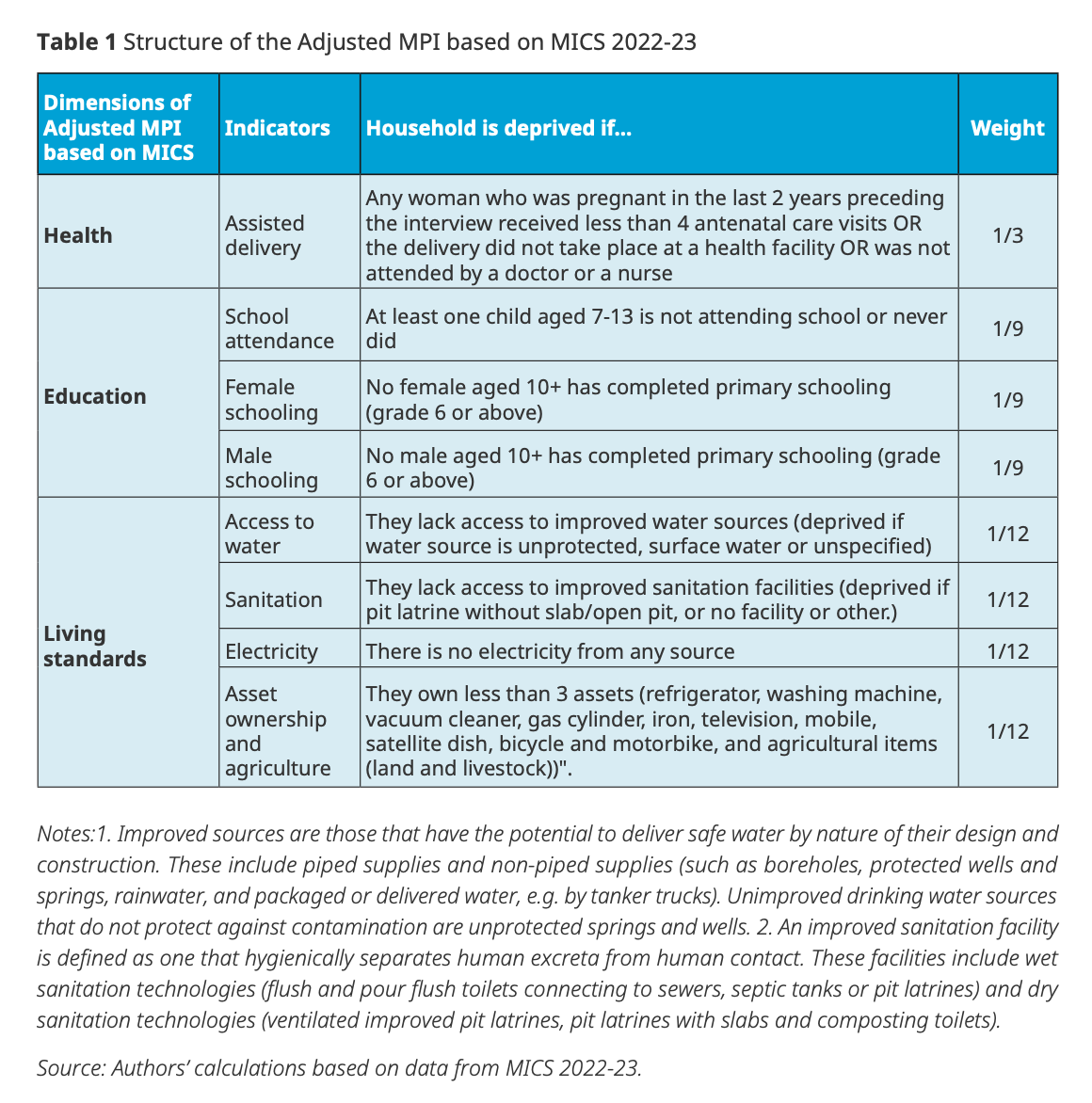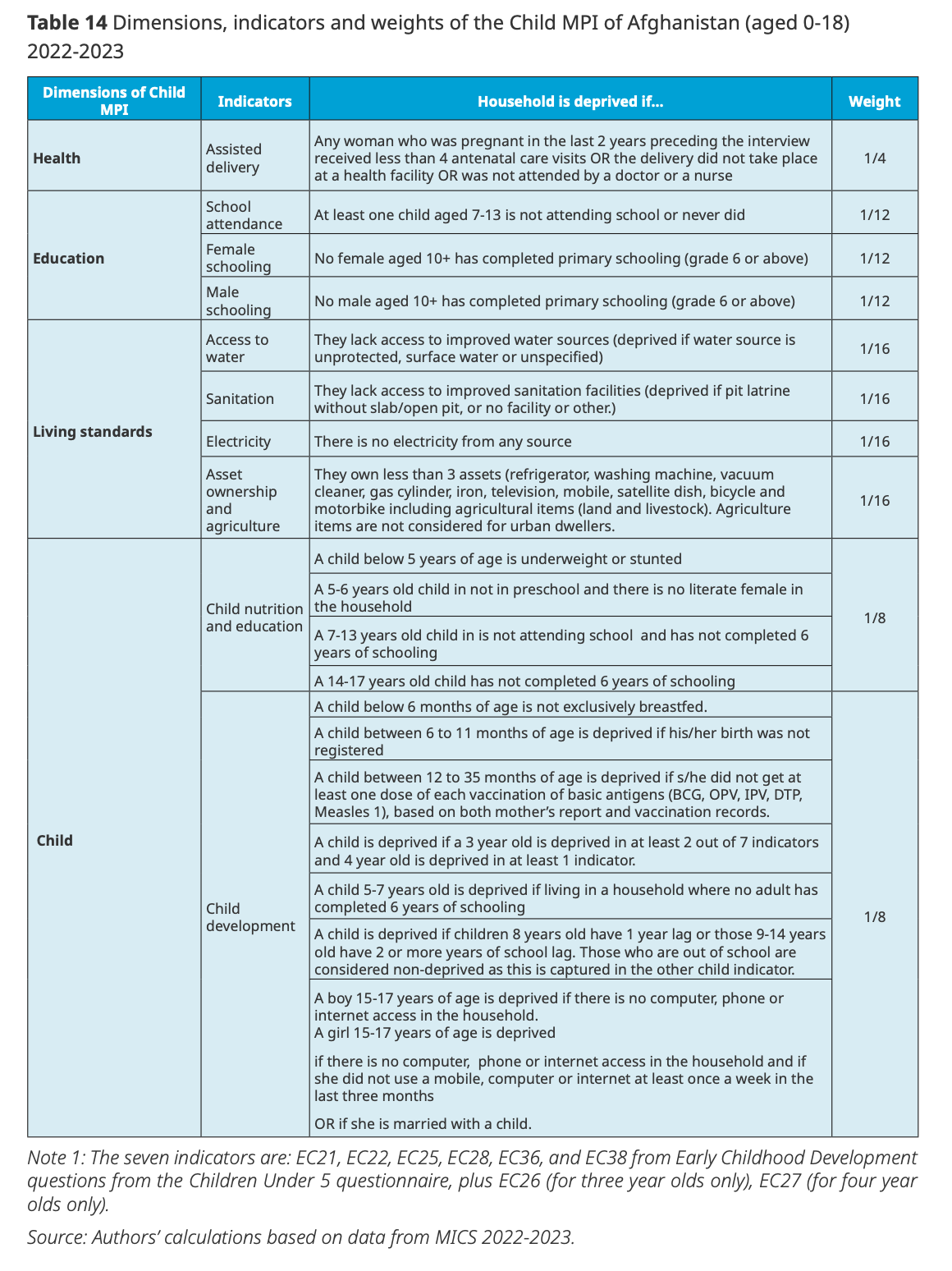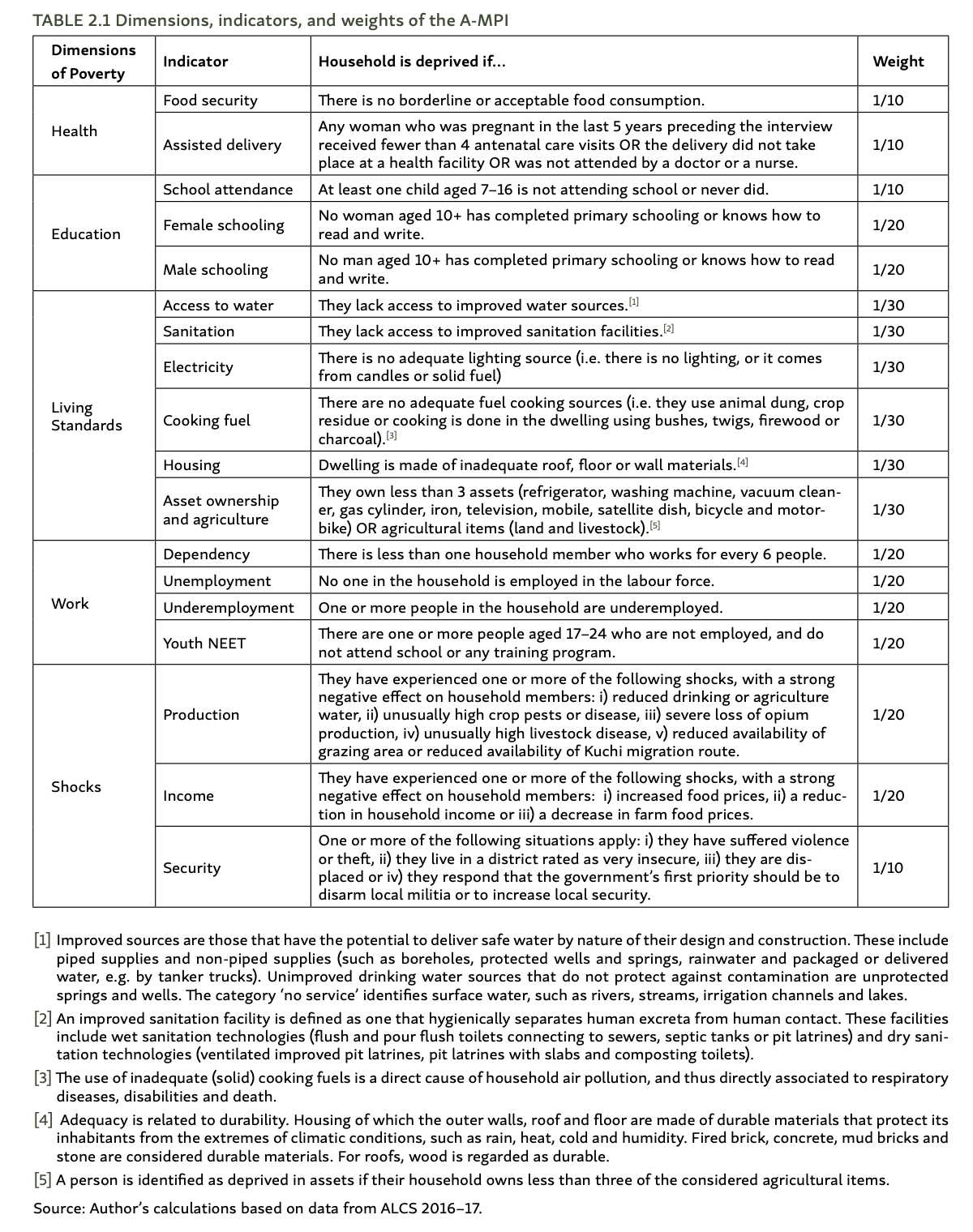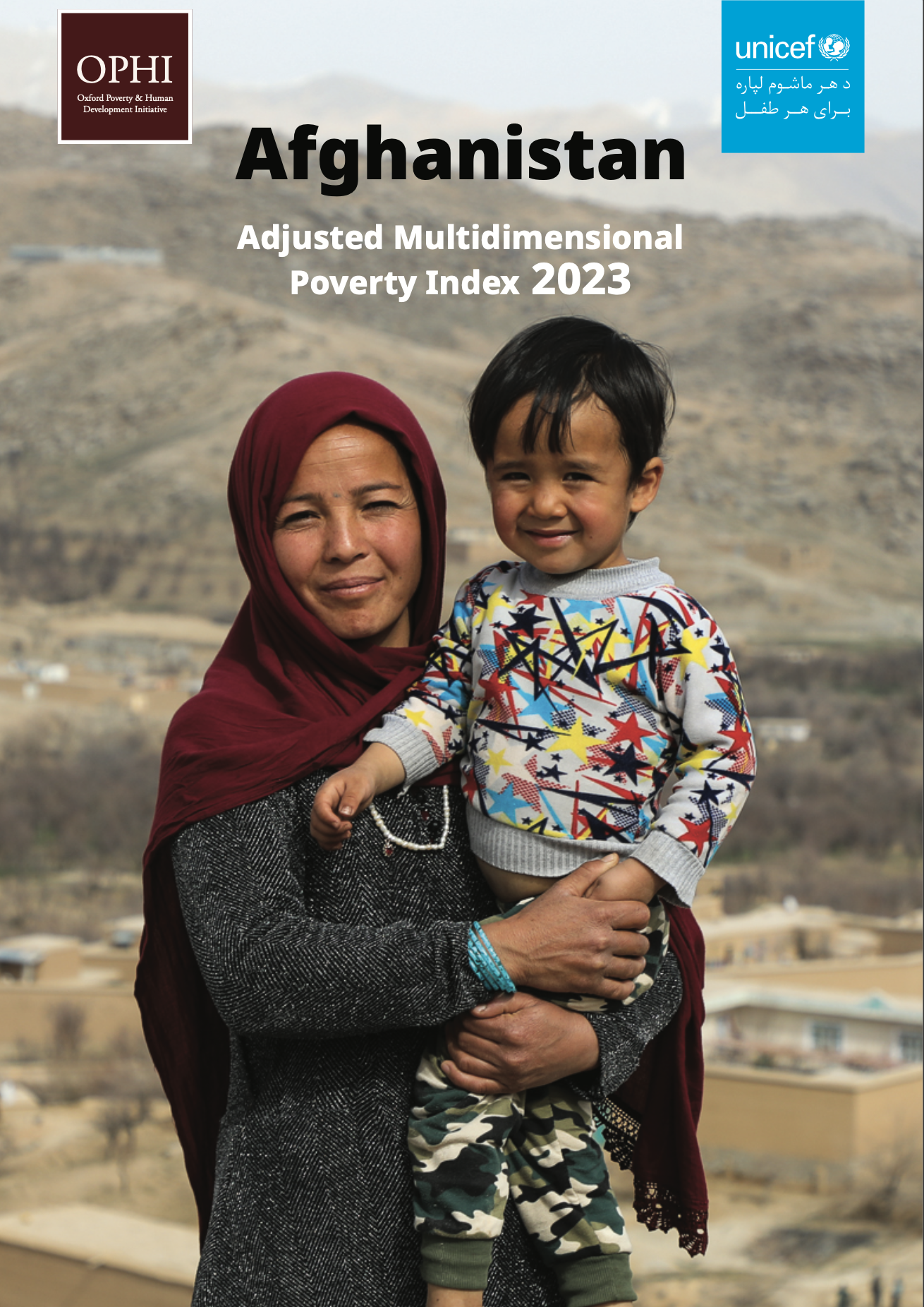Afghanistan MPI
MPI originally introduced: 2019
Latest results: Afghanistan's Adjusted MPI 2022–23
UNICEF Afghanistan, in collaboration with the Oxford Poverty and Human Development Initiative (OPHI) at the University of Oxford, has undertaken an analysis of the most recent Afghanistan Multiple Indicator Cluster Survey (MICS) to revise and update the Afghanistan Multidimensional Poverty Index (MPI). The report presents critical insights into three core dimensions of the Multidimensional Poverty Index (MPI) i.e., health, education, and living standards.
Findings from this analysis show that in Afghanistan, 62.3 per cent of the population live in multidimensional poverty as per the Adjusted MPI based on MICS. This marks a significant increase from 50.8 per cent in 2020 to 62.3 per cent in 2023, underscoring the urgent need for a comprehensive and coordinated poverty reduction strategy. Such a strategy must integrate both immediate humanitarian relief and long-term development interventions across all dimensions of poverty.
Citation: OPHI and UNICEF (2024). Afghanistan's Adjusted Multidimensional Poverty Index (based on MICS 2022-23) and Child Multidimensional Poverty Index, Oxford Poverty and Human Development Initiative (OPHI) and UNICEF, Kabul.
Previous results
The National Statistics and Information Authority (NSIA) of Afghanistan in collaboration with OPHI published the Multidimensional Poverty Report Index 2016–2017 in March 2019. It presented the first official, Afghanistan Multidimensional Poverty Index (A-MPI) to help policy makers in Afghanistan coordinate poverty reduction programmes.
- Citation: National Statistics and Information Authority (2019). Afghanistan Multidimensional Poverty Index 2016–2017. NSIA, Kabul
- Leaflet for the launch of the 2019 report
In February 2021, the National Statistics and Information Authority (NSIA) presented unpublished results of the Afghanistan Multidimensional Poverty Index (A-MPI) 2020, at the United Nations Statistics Commission, and also discussed the trends in the A-MPI since 2016/17.
In 2022, OPHI and the Islamic Development Bank Institute (IsDBI) published a policy report based on the 2020 MPI which drew on data from the 2020 Afghanistan Income Expenditure and Labour Force Survey.
- Citation: IsDBI and OPHI (2022). Multidimensional Poverty in Afghanistan: Policy-oriented Report using the 2020 Afghanistan Income Expenditure and Labour Force Survey, IsDBI–OPHI Briefs No. 7, Islamic Development Bank Institute (IsDBI), and Oxford Poverty and Human Development Initiative (OPHI).
- 25 February 2021 | Intervention by Hasibullah Mowahed, Deputy Director General, National Statistics and Information Authority, Afghanistan at UNSC 52 Side Event
Afghanistan Adjusted MPI structure: dimensions and indicators
Poverty Cut-Off: A person is considered poor if they are deprived in 33.3% or more of the 8 weighted indicators.

Source: OPHI and UNICEF (2024). Afghanistan's Adjusted Multidimensional Poverty Index (based on MICS 2022-23) and Child Multidimensional Poverty Index, Oxford Poverty and Human Development Initiative (OPHI) and UNICEF, Kabul.
Afghanistan Linked Child MPI structure: dimensions and indicators
Poverty Cut-Off: A child aged (0–17) is considered poor if they are deprived in 25% or more of the 10 weighted indicators.

Source: OPHI and UNICEF (2024). Afghanistan's Adjusted Multidimensional Poverty Index (based on MICS 2022-23) and Child Multidimensional Poverty Index, Oxford Poverty and Human Development Initiative (OPHI) and UNICEF, Kabul.
Afghanistan Original MPI structure: dimensions and indicators
Poverty Cut-Off: A person is considered poor if they are deprived in 40% or more of the 18 weighted indicators.

Global MPI
The annual global MPI produced by the Oxford Poverty and Human Development Initiative in partnership with the Human Development Report Office of the United Nations Development Programme is an internationally comparable index of acute multidimensional poverty. OPHI publishes Country Briefings summarising poverty statistics of the global MPI for each country.
Visit the most recent Global MPI Country Briefing for Afghanistan based on MICS year 2022-2023.
More info on National MPI of Afghanistan
Official institution responsible for statistics
- National Statistics and Information Authority (NSIA) of the Government of the Islamic Republic of Afghanistan
Events
- 25 February 2021 | Intervention by Hasibullah Mowahed, Deputy Director General, National Statistics and Information Authority, Afghanistan at UNSC 52 Side Event
- 23 September 2020 | Intervention by H.E. Ashraf Ghani, President of Afghanistan at UNGA 75 Side Event
Dimensions articles
- 4 August 2020 | Stanley Gwavuya | 'How the pandemic will aggravate multidimensional poverty in Afghanistan'
- 15 August 2019 | Abdul Alim | 'The Insights From a Comparable Child Poverty Measurement: The Case of South Asia'



